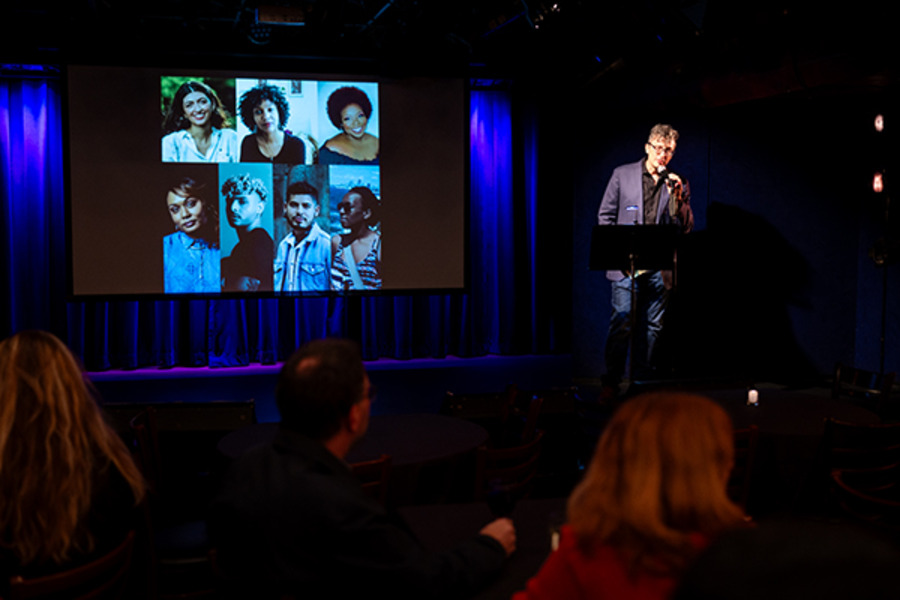Less than one percent of the designs on Broadway during the 2021-22 and 2022-23 seasons were created by Latinx designers, despite people of that ethnicity representing 19 percent of the U.S. population, according to data compiled by the 1/52 Project, a grant program that seeks to redress this kind of disparity. While women designers and folks of other ethnicities saw slightly higher representation rates than their Latinx counterparts, white male designers were still credited with nearly three-quarters of the designs crafted over those two seasons.
One of the few whose designs graced the Great White Way last fall was Argentinian projection and video designer Stefania Bulbarella, who made her Broadway debut with Jaja’s African Hair Braiding at Manhattan Theatre Club. Bulbarella was one of seven inaugural recipients of the 1/52 Project grant program in 2022, an honor she called “life-changing.”
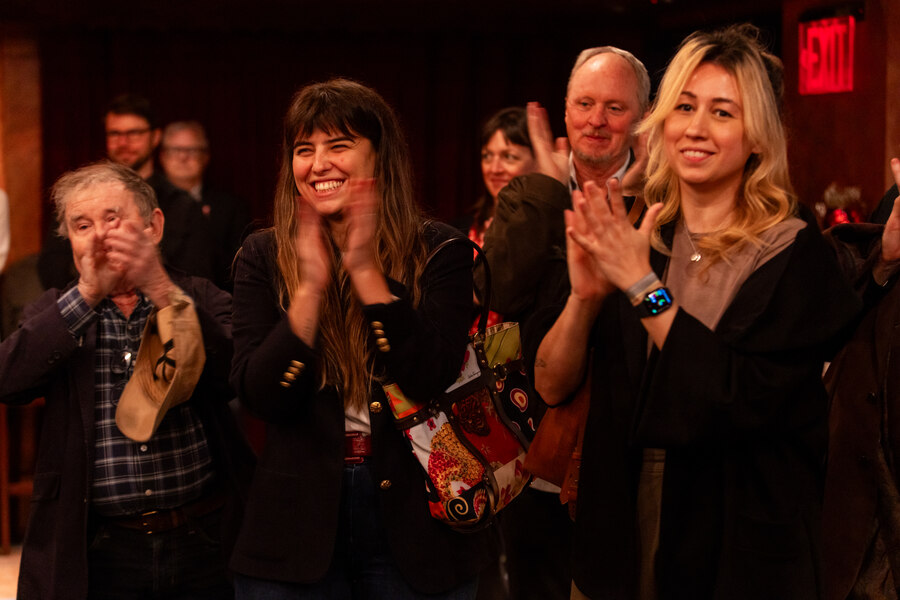
The 1/52 Project is a designer-led volunteer initiative that provides financial support to early-career designers from historically excluded groups with the aim of diversifying and strengthening the theatre design community. The project’s name refers to its business model, as designers with shows running on Broadway are encouraged to donate one week per year of royalties to the fund. Informed by #MeToo, Black Lives Matter, and We See You White American Theater, and inspired by his father’s experiences as a Hungarian immigrant, 1/52 founder Beowulf Boritt, a busy scenic designer on Broadway and elsewhere, hopes to make meaningful change in the industry.
“Racism and sexism are as American as apple pie,” he said. “I don’t think anybody is owed a career in the theatre, but it shouldn’t be harder because you’re a woman or because you’re not white, and it clearly is. So this was a way of trying to create a conduit where established designers who have been lucky and been able to make a good living doing this could give a little back.”
Like many established artists, the Tony-winning designer is accustomed to receiving an additional weekly compensation (AWC) check for his set designs. These royalty payments range from $100 to $1,000 or more, depending on the terms of the contract and the minimums negotiated by the design unions. Some determining factors include the size of the theatre, the company’s commercial or nonprofit status, the length of a show’s run, and whether the theatre has recouped 110 percent of its production costs, at which point designers can receive a percentage of the show’s weekly net operating profit. These payments typically continue throughout the run of a commercial production, sometimes for years. Boritt realized that donating one of his 52 AWC checks per year would not cause him tremendous financial hardship, and that other Broadway designers might feel the same.
As a self-proclaimed “straight white boy who’s had a lot of luck in the theatre,” Boritt did not want to be the one making all of the decisions and hoped to find someone who would take charge. “It finally dawned on me that if it was going to happen, I had to do it.”
Boritt formed a partnership with TheFrontOffice Foundation that helped the program find its footing. He also assembled a committee of women and BIPOC designers of various disciplines to develop grant criteria, evaluate applications, and conduct finalist interviews. The committee has since grown to include 18 designers.
“In all honesty, and I probably even mentioned this to Beowulf, I thought that somehow it was almost a quixotic project that would be him trying to fight against the windmills,” said costume designer and founding 1/52 committee member Alejo Vietti. “But I’m super impressed with what he has been able to accomplish. I am so, so proud to be part of the original group that started this.”
Since its inception, the project has raised more than $200,000 in donations from designers and other theatre professionals and disbursed 92 percent of all funds raised to deserving grantees. Over the last two years, the program has supported 14 emerging designers from underrepresented backgrounds with grants of up to $15,000, along with software subscriptions and smaller grants, depending on individual needs. (As a fiscal sponsor for the project, the Players Philanthropy Fund charges a six percent fee in exchange for its donation processing and 501(c)(3) administration services.) Though funding for the project starts and ends with designers, 1/52 accepts donations from anyone interested in supporting its mission.
Like any donation-based effort, the number of designers the project can support is limited by how much they are able to raise, and Boritt acknowledges that this is a difficult time for everyone in the theatre. Even so, the process has been immensely gratifying.
“The most fun, of course, is when we’re able to actually give the grants to people and hopefully make a little difference in their lives, but it’s also the point every year where I wish I could raise twice as much money,” he said, noting that the 1/52 candidate pool grew from around 40 to 60 applicants between 2022 and 2023. “We could give away twice as many grants to completely worthy applicants.”
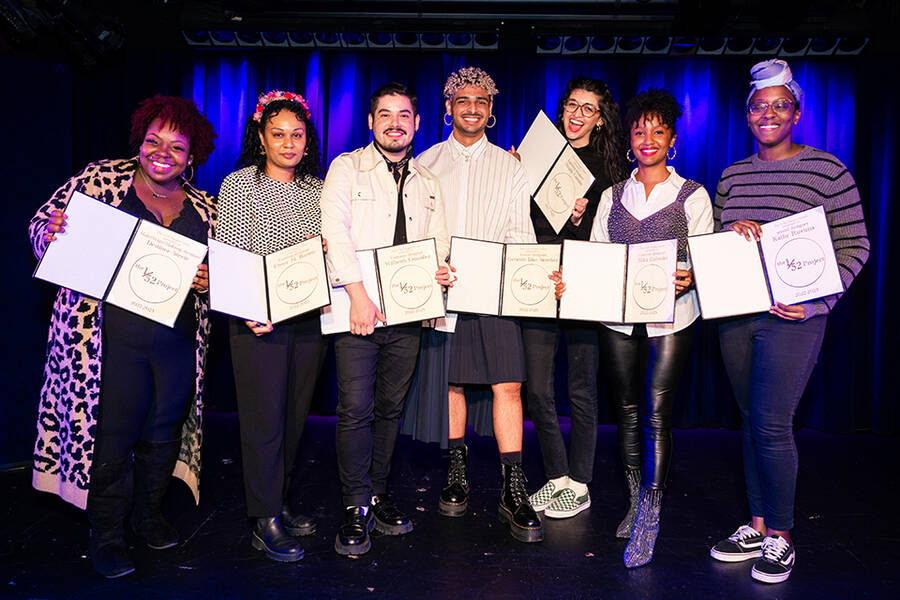
Recipients said the funding gave them a sense of relief and financial security. Between bills, rent, union dues, software, and equipment, emerging designers are faced with a lot of upfront expenses. Bulbarella described her experience as “going from literally living month to month to suddenly feeling safe.”
“The grant happened to land at a really helpful time in my life,” added 2023 lighting design recipient Ebony Burton. An important project fell through while she was grieving the death of a family member. “Just the relief and the weight off of one’s shoulders cannot be understated when you don’t have to stress about bills, particularly when you’re experiencing hardship, or tragedy, or whatever it may be.” Burton is currently working on an art installation that will be on display at the Lincoln Center campus in March.
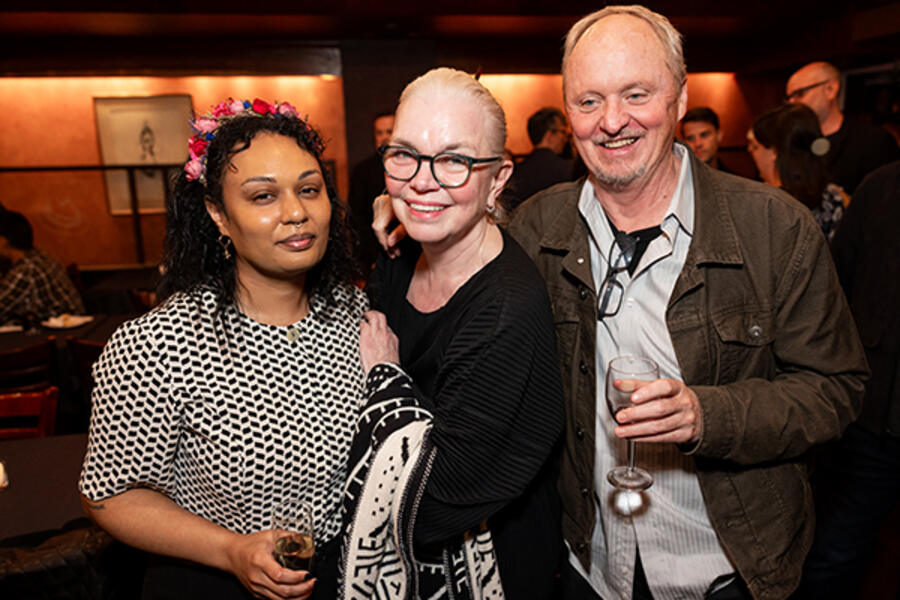
Early-career designers can usually find higher pay and longer contracts working as assistants for established Broadway designers. Recipients said this grant gave them the flexibility to pursue their own design projects and build their portfolios, even if it meant working Off-Broadway for less money.
“I was really afraid of being a career associate or an assistant for so long,” said 2022 scenic design recipient Jessica Cancino, “because it can become financially comfortable to be in those roles. You’re not the one that has to go get the work, somebody gets it for you, and then there will be a paycheck coming.”
At the time she applied, Cancino was working four jobs just to stay afloat. She became a full-time painter on film sets in order to finance her design career. The funding has allowed her to scale back and be more intentional about choosing projects. She has assisted Boritt on several productions while still pursuing her own design work.
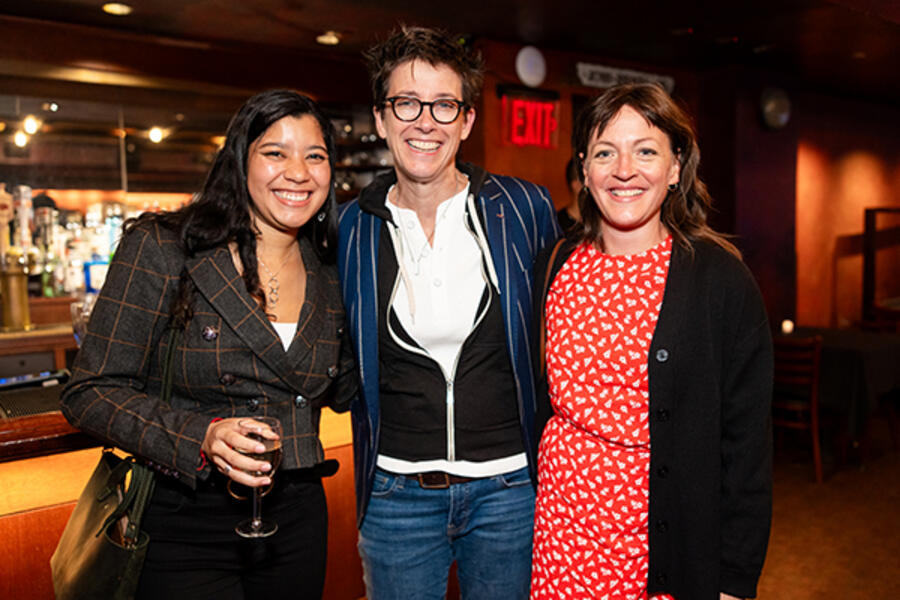
While not officially a mentorship program, the 1/52 Project provides an invaluable opportunity for recipients to connect with established designers and each other. Every year, the project hosts an awards ceremony for recipients, where they are introduced to the grant committee, the program donors, and other members of the theatre industry.
“There were all these Broadway designers who I always dreamed of meeting, who I’ve been super impressed with, and whose work I’d admired for years, and suddenly they were all in this room,” said Bulbarella. Though initially starstruck, grant recipients were finally able to put faces to the names they had come across in Playbills. And those connections often led to employment opportunities.
For Vietti, who emigrated to the U.S. from Argentina in 1997, the mission of diversifying the field feels personal.
“I’ve been told many, many times in my career, ‘This is not how we do it here. This is not an aesthetic we have here. You don’t understand, because you’re not American,’” Vietti said. He hopes that the 1/52 Project will help create more space for designers of underrepresented backgrounds in the theatre industry—though it’s still shocking how many Broadway productions do not have a single person of color on their design teams.
“I’m not asking for 50 percent,” he said. “I will be more than content to see that Broadway has at least one POC on every design team.”
The 1/52 Project is accepting applications for the 2024 grant cycle through May 15. Donations to the 1/52 Project can be made here.
Alexandra Pierson (she/her) is the associate editor of American Theatre.

